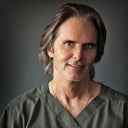Posted underRhinoplasty q&a
Why isn't my cast straight? Will it affect how my nose will look like? (Photo)
I had a rhinoplasty + septoplasty on monday and I am trying not to freak out but I just thought I would ask, is my cast not put correctly? One side is not "sticking" on the side of my nose but the other side is and it just doesn't look straight at all... I am getting it removed tomorrow and obviously I am a bit scared, I know it takes time before seeing the final result and for the swelling to go down but if my nose is not right in the middle of my face I will see it straight away, wouldn't I?
Answers (3)
From board-certified doctors and trusted medical professionals
More Rhinoplasty Questions
See all Rhinoplasty Q&AWE SEND PRETTY
EMAILS
What’s trending? Who’s turning heads? Which TikTok myths need busting? We’ve got you. No fluff, no gatekeeping—just real talk. Get our free, unfiltered newsletter.



